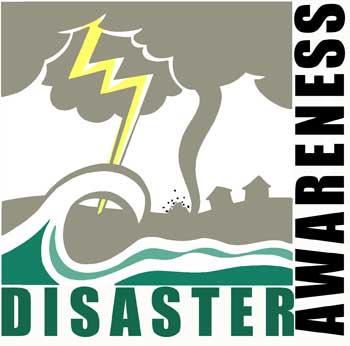In times of disaster, Free and Charitable Clinics serve as first responders helping people access health care, medications and supplies that they need. In the event of a disaster, the NAFC reaches out to members in affected areas to offer guidance, assistance and needed resources. Long before I became an assistant campaign manager at the Ad Council, I was a macaroni-and-cheese loving, horseback riding, extremely timid half-Asian girl in a coastal Connecticut town, raised by an English, Polish, Hungarian, Welsh, Swedish, German mother and a Chinese father. National Taxation Number: 2569250-0 Charity Registration Number: RP/4243/L/S/90/77 Alkhidmat Foundation Pakistan is tax exempted under FBR act 2(36)c.
When disaster strikes, we see the best of our nation. It's 'all hands on deck.' Neighbor helping neighbor. Seeking to help is the essence of a 'charitable' impulse. While our webpage below offers basic information for nonprofits with facilities and employees affected by disasters, and for donors seeking to provide assistance post disaster, we encourage those seeking detailed information about a nonprofit's own recovery to monitor federal government websites such as: Disaster Assistance.gov, and to review the IRS publication Disaster Resource Guide for Individuals and Businesses (IRS Publication 2194). We encourage donors considering charitable donations and seeking ways to provide assistance to check with the Center for Disaster Philanthropy for information and guidance on charitable donations and other ways to assist with recovery efforts.
Considerations for Donating
Post disaster, every contribution is given with the right intentions, but potential donations of “things” may not be practical to transport or distribute, or address the most immediate needs. What’s possible and practical? Unfortunately, in times of disasters, there is a risk of fraud, such as when someone poses as a representative of a charitable organization when in fact there is no underlying organization. We encourage donors to give only to nonprofits they know. You can check whether a group is recognized as tax-exempt by the IRS using the IRS search tool. Nonprofits may wonder whether they can pivot from their primary mission to provide disaster relief. The answer is 'yes' but with some limitations, explained below under the heading 'Practical Pointers for Nonprofits.'
NB: Special rules apply for donations to organizations that are based outside the US and may not be recognized as tax-exempt by the IRS: In September 2017, new IRS regulations clarify the requirement to make a “good faith determination” that an overseas organization is “equivalent” to a U.S. 501(c)(3) public charity.
PRACTICAL TIPS for POST-DISASTER DONATIONS:
- While there may be a temptation to send clothing, blankets, or nonperishable food, in many cases a monetary donation is best. A front-line nonprofit will be able to put your contribution to the best possible use based on the needs on-the-ground. Food and clothing, while always appreciated, require additional capacity to transport, sort (to ensure nothing is past an expiration date, for example), distribute, and use. Nonprofits are also sometimes able to negotiate for discounts on needed items, making a donated dollar go even further than when donors purchase items themselves.
- Law enforcement warns not to give through links embedded in unsolicited emails because they could lead to fraudulent websites masquerading as charitable organizations.
- Individuals may wish to hold a fundraiser to raise money for disaster relief. To ensure that donors may deduct contributions, a tax-exempt organization must receive the donations and document that contributions are made to qualified donees. More details from the IRS.
- Remember that, in the immediate aftermath of a disaster, law enforcement and first responders ask others NOT to enter areas affected by the disaster, unless they are part of an organized and coordinated recovery effort, to avoid hampering rescue and recovery efforts (as well as for the safety of all involved)
- Anyone, including an employer, can make “qualified disaster relief payments” to cover reasonable and necessary personal, family, living, or funeral expenses incurred as a result of a disaster or to repair a personal residence located in a declared disaster area. Such assistance is not taxable as income to the person receiving the assistance. More information from FEMA.
In the wake of disasters, new nonprofits often spring up with good intentions to help in affected communities, but established groups with the infrastructure and ability to respond quickly and efficiently may already be mobilizing relief efforts. Check the website of the Center for Disaster Philanthropy to learn about these and other ways to provide assistance. If you are considering starting a nonprofit to respond to a disaster, be sure to read, Starting and maintaining a charity for disaster relief (IRS).
While disasters call our attention to immediate needs, recovery from disasters is likely to take a long time, so longer-term aid is also needed. Consider making automatic recurring contributions to organizations helping in a recovery. Recovery efforts often take years, and go on long after initial contributions have been exhausted. Even a small recurring gift can make a difference not only to the community in recovery, but also to the charitable nonprofit(s) assisting the community and its residents get back into their homes/jobs, and onto their own two feet.
Download Disaster Donations Management Program Free Download
More advice from the IRS:
The IRS cautions people wishing to make disaster-related charitable donations to avoid scam artists by following these tips:
- Be sure to donate to recognized charities.
- Be wary of charities with names that are similar to familiar or nationally known organizations. Some phony charities use names or websites that sound or look like those of respected, legitimate organizations. The IRS website at IRS.gov has a search feature, Tax-Exempt Organization Search, through which people may find qualified charities; donations to these charities may be tax-deductible.
- Don’t give out personal financial information — such as Social Security numbers or credit card and bank account numbers and passwords — to anyone who solicits a contribution. Scam artists may use this information to steal a donor’s identity and money.
- Never give or send cash. For security and tax record purposes, contribute by check or credit card or another way that provides documentation of the donation.
- Consult IRS Publication 526, Charitable Contributions, available on IRS.gov. This free booklet describes the tax rules that apply to making legitimate tax-deductible donations. Among other things, it also provides complete details on what records to keep.
- Taxpayers suspecting fraud by email should visit IRS.gov and search for the keywords “Report Phishing.”
Practice Pointers for Nonprofits
Even when disaster relief is not the primary mission of a nonprofit, there are ways to provide assistance, including direct financial payments to those affected. However, given that tax-exempt charitable nonprofits (including private foundations) must abide by the prohibition against 'private benefit' in the tax code, nonprofits need to be careful about how they provide direct financial assistance to individuals.
- May an organization provide disaster relief to victims of a particular disaster even though disaster relief is not specified in its exempt application? YES! However, care must be taken when selecting the individuals to receive assistance. Click here for more IRS FAQs for nonprofits seeking information about how to provide assistance.
- Nonprofits that provide disaster relief should be careful to document the costs with detailed descriptions of dates, assistance provided, the purpose for the assistance, and how the recipients of assistance were selected, as well as the name, address, and amount distributed to each recipient. If there is any relationship between individuals receiving assistance and those in control of the nonprofit or key employees, that must also be disclosed. Additionally, the people selecting the individuals who receive assistance must also be disclosed. See IRS guidance: Disaster Relief: How Charities Must Document Relief Activities.
- Many nonprofits provide 'safety net' services for the community. In the aftermath of a disaster those service providers may themselves be struggling. Consider strategies, such as those used by the Marin County Community Foundation, to accelerate aid and assistance through pre-approved grant assistance for charitable nonprofits that are working to provide disaster relief.
- Language barriers may make it difficult for some victims to receive the same access to assistance as English-speakers. Offering translation services and/or helping to provide access to translated information is another way to assist with disaster recovery.
The IRS generally provides tax relief for those with filing deadlines, including nonprofits, who are affected by disasters. Check the IRS website: Tax Relief in Disaster Situations.
The Small Business Administration offers loans to small enterprises, including nonprofits in some cases, affected by disasters: SBA Disaster Loan Assistance.
Download Disaster Donations Management Program Free Trial
Resources

- Center for Disaster Philanthropy will post relevant information and resources, such as webinars on how to support recovery efforts.
- Federal Management Agency (FEMA) will provide news about federal assistance.
- Disaster Relief, Providing Assistance through Charitable Organizations (IRS Publication 3833)
- Disaster Resource Guide for Individuals and Businesses (IRS Publication 2194)
- Disaster relief Part I (IRS podcast)
- Disaster relief Part II (Providing relief through nonprofit organizations, IRS podcast)
- Reconstructing records after a disaster (IRS podcast)
- Starting and maintaining a charity for disaster relief (IRS)
- Disaster Philanthropy Playbook (Center for Disaster Philanthropy)
- Disaster Planning and Recovery (TechSoup)
- On-demand disaster preparedness course (TechSoup)
- Giving to disaster relief and recovery (GuideStar)
- Be prepared for disasters! Ready.gov
- Surviving a crisis: Practical strategies for nonprofit organizations (Nonprofits Insurance Alliance of California and Alliance of Nonprofits for Insurance)
Purchasing Programs
Cooperative Purchasing Program
Purchase security and law enforcement equipment from GSA Schedule 84, and technology products and professional services from GSA IT Schedule 70 and the IT Special Item Numbers on the Consolidated Schedule.
Disaster Purchasing Program

Purchase directly from approved GSA Federal Supply Schedule vendors to prepare and respond to disasters or to recover from Presidentially declared disasters or acts of terrorism, to aid in recovery.
1122 Program

Purchase approved law enforcement equipment and vehicles from selected GSA Schedules and AutoChoice for use in counter-drug, homeland security and emergency response activities.
Download Disaster Donations Management Program Free Shipping
Schedules Access for Federal Grantees During Public Health Emergencies
Purchase directly from GSA Federal Supply Schedule contractors, when expending Federal grant funds in response to Public Health Emergencies (PHE), declared by the Secretary of Health and Human Services, under section 319 of the Public Health Services Act, codified at 42 U.S.C. § 247d.
Download Disaster Donations Management Program Free Printable
Download the Federal Grantee Access to Schedules in Response to Public Health Emergencies Program [PDF - 486 KB] Brochure.
